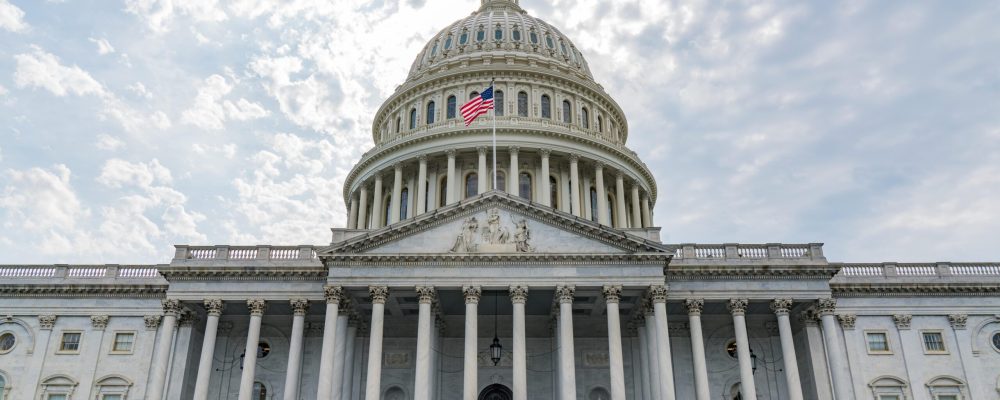
The information provided is based on the published date.
Key takeaways
- Some retirees can wait longer before withdrawing money from certain retirement accounts.
- Older workers can put more away for retirement.
- More part-time workers can now participate in retirement plans.
- Unspent college/education funds can be rolled over into retirement accounts.
- Small businesses now have an expanded tax credit.
The Secure Act 2.0, recently passed by Congress and signed into law by President Biden, is a far-reaching document that will change the game for most Americans, including retirees, retirement plan participants, small business owners, and families paying for education.
It’s important to remember that most provisions do not take effect until 2024 or later, so you have plenty of time to adjust your strategy with your planner. And while this isn't a comprehensive guide to everything contained in the 4,000-page act, we highlight the key points that will affect the most people.
Retirees
Retirees with certain retirement accounts must take a required minimum distribution (RMD) (mandatory withdrawal) by a certain age. Significant tax penalties exist for those who either miss the deadline to start taking an RMD or withdraw the incorrect amount.
The big change is when retirees must start taking an RMD. Previously, retirees had to begin at age 70½. Now, depending on their age, some retirees can wait awhile if they wish. This is advantageous to individuals that do not need to withdraw funds because every dollar taken out raises their taxable income, and every dollar left in an account can continue growing. Here are the new changes:
- If you turned 70½ before 2020, RMDs are required
- If you turned 70½ in 2020 or later, the RMD starting age is 72
- Now, if you turn 72 after 12/31/2022, the RMD age is increased to 73 as of January 1, 2023
- The RMD age will increase to 75 by 2033
SECURE Act 2.0: Phased-in timeline for RMD starting ages
Birth Year |
Age When RMDs Start |
1950 or earlier |
72 (70 ½ for those who turned prior to 2020) |
1951 to 1959 |
73 |
1960 or later |
75 |
Retirement plan participants
Another notable change is the new exemption for Roth accounts inside retirement plans, such as 401(k)s, 403(b)s, 457(b)s, and TSPs. These accounts are no longer subject to RMDs. If you're unsure whether this applies to you, ask your financial advisor or your organization's benefits administrator to be sure.
If you're self-employed and have a SEP-IRA or Simple IRA, you can now add a Roth account and contribute to it. This gives plan participants greater flexibility to choose how their retirement savings are taxed.
One more Roth option for employers: Historically, 401(k) and 403(b) employer contributions have been pre-tax. That means employees must pay taxes on that money when they make withdrawals. However, section 604 of the bill now allows employers to let employees get matching contributions on a Roth basis. That means employees pay taxes on the employer's contributions now and then pay no taxes when the money is withdrawn in retirement.
Finally, older workers will see changes in how much they can contribute. Previously, the IRS allowed older workers to contribute more to certain retirement accounts as a “catch-up” contribution. Each year, the IRS sets the limit for these contributions. Those limits have been increased and will now be indexed for inflation as follows:
For workers contributing to 401(k) or 403(b) plans aged 60-63:
- Catch-up contributions increase to the greater of $10,000 (indexed for inflation), or
- 150% of the regular catch-up contribution amount for such plans in 2024.
For SIMPLE IRA Plan participants aged 60-63:
- Catch-up contributions increase to the greater of $5,000 (indexed for inflation), or
- 150% of the regular SIMPLE IRA catch-up contribution amount for 2025.
One caveat for high-income employees: Catch-up contributions will be taxed as Roth contributions. Catch-up contributions to 401(k), 403(b), and governmental 457(b) plans (not IRAs and SIMPLE IRAs) will be treated automatically as Roth contributions for workers making over $145,000.
Increased access to retirement plans
Workers will now be automatically enrolled into company retirement plans (401(k) and 403(b) plans) when they become eligible, with a minimum default amount of at least 3% of an employee's salary. After that, the amount is increased by one percentage point each year until it reaches at least 10%—but not more than 15%—of the employee's salary. All existing 401(k) and 403(b) plans will be grandfathered.
Long-term, part-time workers will have more access to retirement plans as well. Currently, these workers can participate in an employer-sponsored plan if they work at least 500 hours per year with at least three years of service. Under the new legislation, that service time will be reduced to two years.
Workers who left a retirement plan behind when switching jobs will now have a new way to track down those accounts. The Labor Department is creating a lost and found database for Americans' retirement plans, such as 401(k) and pension plans, which will be up and running within two years.
Small business owners
Currently, companies with up to 50 employees can claim a tax credit, called the Employee Retention Credit, for up to 50% of certain employee expenses. The Secure Act 2.0 bumps that credit to 100% and raises the company size threshold from 50 to 100 employees. In addition, there's a per-employee cap of $1,000.
Families paying for education
Many parents use education savings plans (also known as 529 plans) to help pay for their children's education. These plans can grow and be used tax-free for qualified education expenses.
Until now, 529 funds could only be used for education costs (without taxes and penalties). Now, unused funds can be rolled over into a Roth IRA under certain circumstances:
- The receiving Roth IRA must be in the name of the 529 plan's beneficiary.
- The 529 plan must have been held for at least 15 years.
- Any 529 plan contributions within the last five years (and earnings on those contributions) cannot be transferred to a Roth IRA.
- The annual IRA contribution limit is the same as the amount that can be transferred from a 529 to a Roth IRA.
- $35,000 is the maximum amount that can be moved from a 529 to a Roth IRA during an individual's lifetime.
Even with those constraints, college graduates with money left in their 529 accounts can now get a jump start on retirement by rolling that money into a retirement account.
In addition, employees with student loans can now receive financial assistance from their employers to pay off those loans. For contributions made for plan years beginning after Dec. 31, 2023, an employer can make matching contributions under a 401(k) plan, 403(b) plan, or SIMPLE IRA with respect to “qualified student loan payments.” In essence, employees can receive matching contributions as they repay their student loans (i.e., student loan payments will be treated as regular “deferral” contributions).
Final word
The Secure Act 2.0 is a sweeping piece of legislation that will impact most Americans. While there are many provisions in the act, some of the highlights include changes to retirement rules, education expenses, and small business ownership.
This act has the potential to change the financial landscape for millions of people. As always, we will stay on top of any new changes to the legislation and keep you updated as things progress.
Facet
Facet Wealth, Inc. (“Facet”) is an SEC registered investment adviser headquartered in Baltimore, Maryland. This is not an offer to sell securities or the solicitation of an offer to purchase securities. This is not investment, financial, legal, or tax advice. Past performance is not a guarantee of future performance.


